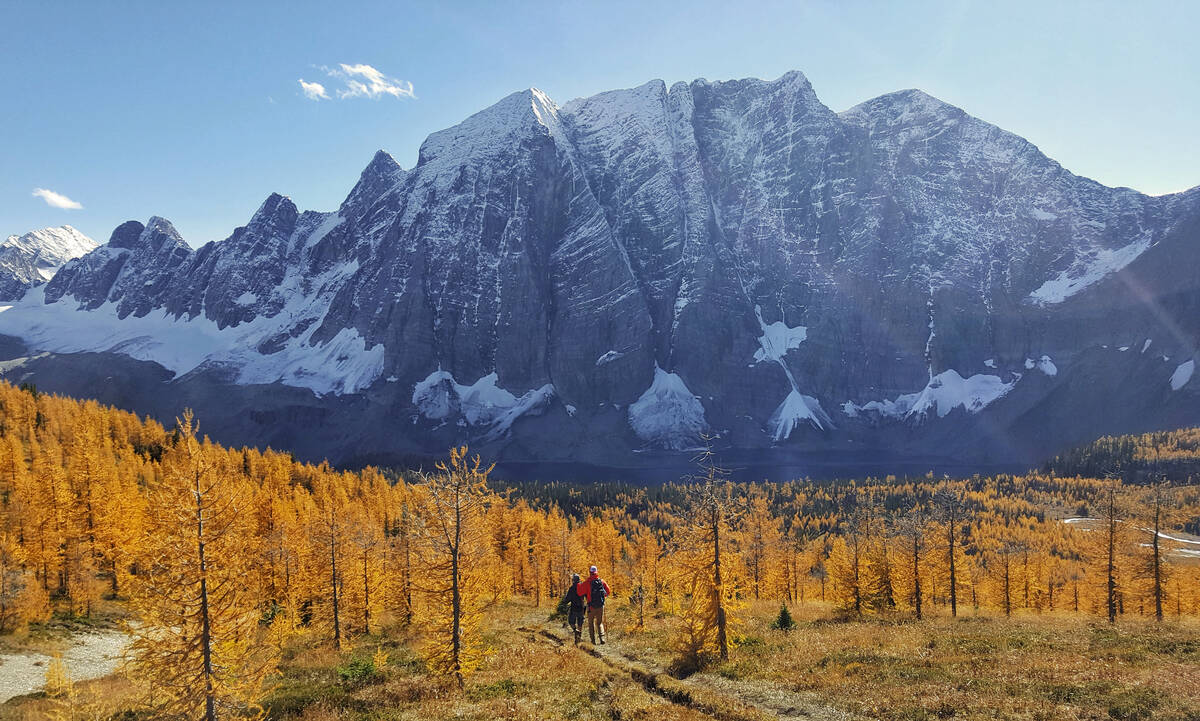Top National Parks on the Alaska Highway
If you’re the kind of traveler who plans road trips around how many national parks and public lands you can string together, then the Alaska Highway is for you. From the iconic Banff and Denali national parks to the massive UNESCO World Heritage Site that includes the Kluane, Wrangell-St. Elias, Glacier Bay, and Tatshenshini-Alsek national parks, this region is dominated by wide-open spaces, dramatic scenery, impressive glaciers, alpine lakes, and majestic mountains. And that’s not even counting the hidden gem parks like Dinosaur and Muncho Lake.
Whether you’re looking to learn more about the Indigenous people who first lived on this land or to spend more time reconnecting with Mother Nature, choose an Alaska Highway driving route (the Inside Passage, Rockies, or Gold Rush routes) for a chance to relish in the public lands of western Canada and Alaska. Pack a tent, hiking boots, a raft, or whatever gear you’re itching to try out most and get exploring.
Alberta
High in the Canadian Rockies, three national parks will surely pull your attention to stop and experience while driving the highway. Banff became Canada’s first national park in 1885. Traverse the park lands by foot, horseback, bike, or skis, but whatever you do don’t miss a stop at Lake Louise to see its brilliant blue waters. The adjacent Jasper National Park preserves an even larger swath of the Rockies and offers similar adventures, plus excellent stargazing and the Icefields Parkway, one of the most scenic drives in the world. While Waterton Lakes National Park is much smaller, it sits on the border of Montana’s Glacier National Park and claims several jaw-dropping attractions: the Chief Mountain lookout and the Red Rock Parkway among them.
If you’re driving through on the Rockies Route, also plan side trips to a few provincial parks. Writing-on-Stone Provincial Park is where Blackfoot warriors came on vision quests. Now a UNESCO World Heritage Site, you can view First Nation petroglyphs (rock carvings) and pictographs (rock paintings). Dinosaur Provincial Park in the Canadian Badlands is home to the highest concentration of cretaceous fossils on the planet. Learn more about Alberta’s nearly 500 parks and protected areas here.

British Columbia
Continuing on the Rockies Route or as a side trip from the Gold Rush Route, Kootenay National Park (known for hot springs, Stanley Glacier, and Marble Canyon Trail) and Yoho National Park (named after a Cree word meaning "wonder and awe”) both lie just beyond Banff. The Takakkaw Falls, one of Canada’s highest waterfalls, will leave you sitting in wonder. And nearby Glacier National Park, the country’s second oldest national park, is a paradise for outdoor enthusiasts — go biking, hiking, climbing, fishing, camping, or just sit in a red Adirondack chair.
Tumbler Ridge’s UNESCO Global Geopark is well worth taking the side road off the Rockies Route. Described as a landscape of geological significance, this geopark features sedimentary deposits that range from 60 to 600 million years old. Spend time scouring the ground for dinosaur tracks and fossils. Looking for even more public spaces? Make stops in Muncho Lake and Liard River Corridor provincial parks and learn all about why nature is the best medicine in British Columbia.

Yukon
Kluane National Park and Reserve isn’t just part of a UNESCO World Heritage Site. It is home to the largest non-polar icefields in the world, and 17 of Canada’s 20 tallest mountains—including Mount Logan, the highest peak in Canada. Whether you’re headed towards the park on the Rockies Route or Inside Passage Route, keep an eye out for bears and Dall sheep along the highway, and definitely leave time for a hike (there are more than 20 trails) or a flightseeing excursion.
If you’re headed north on the Gold Rush Route instead, make time to turn off on the unpaved Dempster Highway to see Tombstone Territorial Park. Referred to as “Canada’s Patagonia,” these mountains stun, whether you take a hike or stay in the car.

Alaska
With more national parkland than any other U.S. state, Alaska is a land of superlatives. And yet there are still two parks that stand above the rest. The Gold Rush Route leads to Denali National Park and Preserve, home to North America’s tallest mountain at 20,310 feet. Attracting visitors all year long, the park is known for wildlife viewing, hiking, camping, dog mushing, rafting, and more. With only one road into the park, the backcountry calls to serious mountaineers and adventurers alike.
Along the Inside Passage Route, Wrangell-St. Elias National Park and Preserve somehow bests even Denali. The largest national park in the entire United States at 13 million acres, it has the highest concentration of mountains and glaciers on Earth. Visitors can spend days hiking, rafting and glacier trekking, or explore the state’s mining history in the ghost town of Kennicott. Find more information on Alaska's parks and public lands.


